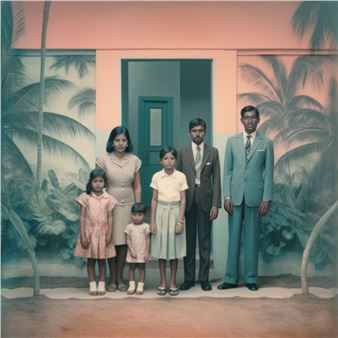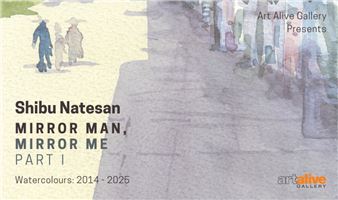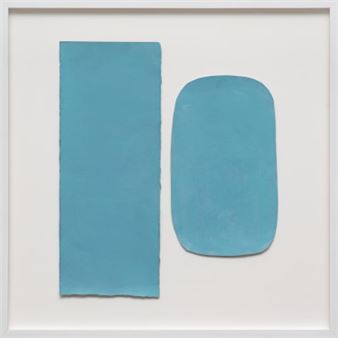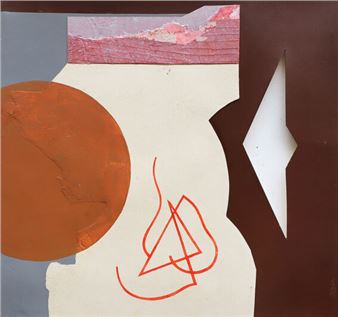Anju Dodiya: The Geometry of Ash
The champas in Anju DodiyaвҖҷs Ghatkopar studio havenвҖҷt flowered this year.
The garden that once perfumed the air now stands bare, its stillness broken by honking and construction on a lane that once held a school and a Jain monastery. Inside, the terrazzo floor has begun to crack; the fissures feel deliberate, echoing ruptures that mark our time вҖ” social, political, ecological, and deeply personal.
In this uneasy quiet, AnjuвҖҷs new body of work takes shape. Surfaces are stretched like rooms divided by invisible seams. Each section of canvas, layered and collaged, holds its own world yet bleeds into the next. A solitary hand gestures toward a cluster of mourners that recalls Gaza. Lovers twist into branches. The body contorts, caught between longing and violence.
Fabrics sourced from small shops across the world become the skin of these paintings. A wax print from West Africa injects a sudden jolt of colour; a stained British Museum tea towel becomes the canvas for another.
Figures familiar from her earlier work return transformed. The pencil, once a tool of imagination, now oscillates between instrument and weapon. Hotel-room isolation gives way to painted collages on found books. Folded papers painted black open into small abysses.
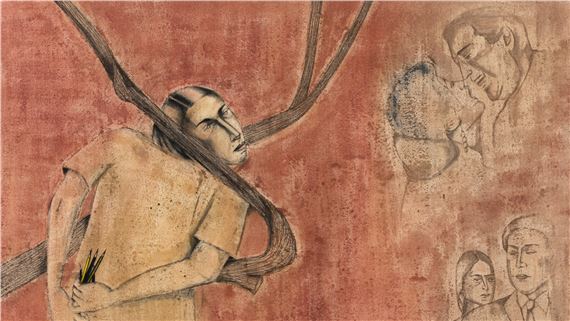
Recommended for you
The champas in Anju DodiyaвҖҷs Ghatkopar studio havenвҖҷt flowered this year.
The garden that once perfumed the air now stands bare, its stillness broken by honking and construction on a lane that once held a school and a Jain monastery. Inside, the terrazzo floor has begun to crack; the fissures feel deliberate, echoing ruptures that mark our time вҖ” social, political, ecological, and deeply personal.
In this uneasy quiet, AnjuвҖҷs new body of work takes shape. Surfaces are stretched like rooms divided by invisible seams. Each section of canvas, layered and collaged, holds its own world yet bleeds into the next. A solitary hand gestures toward a cluster of mourners that recalls Gaza. Lovers twist into branches. The body contorts, caught between longing and violence.
Fabrics sourced from small shops across the world become the skin of these paintings. A wax print from West Africa injects a sudden jolt of colour; a stained British Museum tea towel becomes the canvas for another.
Figures familiar from her earlier work return transformed. The pencil, once a tool of imagination, now oscillates between instrument and weapon. Hotel-room isolation gives way to painted collages on found books. Folded papers painted black open into small abysses.
Artists on show
Contact details


 ARTISTS
ARTISTS







